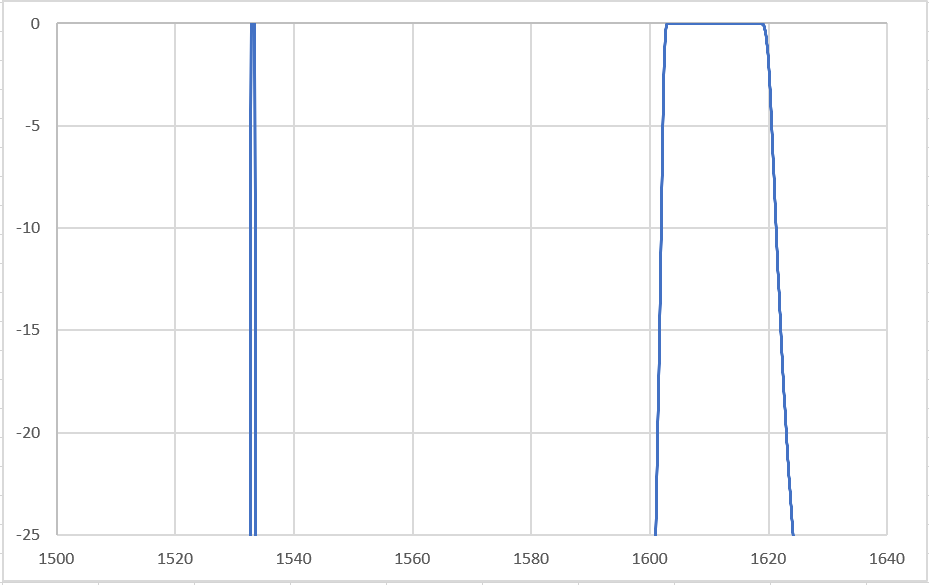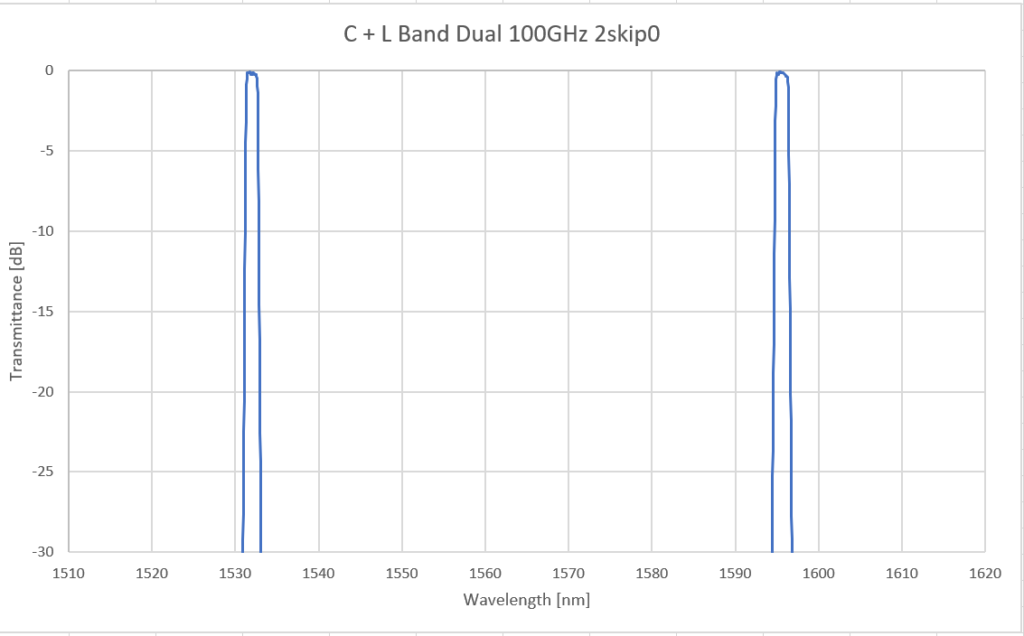By Xiaolun Zeng, Michelle Briere, and Rebecca Saaltink, Iridian Spectral
Dense wavelength division multiplexing (DWDM) enables fiber-optic telecommunications networks to transmit signals of several wavelengths simultaneously. Accordingly, DWDM optical module designers are always looking for ways to improve module performance while balancing optical performance, channel utilization, and cost, as well as dimension concerns in design and production.
Narrow dual band pass filters (NDBPFs), designed and produced mostly for DWDM modules, can achieve just this result, improving the DWDM module’s total insertion loss by reducing the number of components used. But the greater advantage of NDBPF use is that it enables reorganization of the components’ grouping within a module. All DWDM modules must be designed for the configuration of the components within to optimize wavelength multiplexing.
Based on our expertise and earlier development of high-quality coarse wavelength division multiplexing (CWDM) multi-band filters, Iridian Spectral received numerous customer requests for DWDM multi-band filters. Our design goal was to apply the CWDM wideband functionality to a DWDM narrowband filter. The result is dual band filters whose use, compared with single-band module constructions, immediately reduces insertion loss in the module. This benefit is combined with easier module assembly (due to using fewer components), reduced footprint necessary to accommodate a larger volume of filters, and a more robust overall module, since less fiber and fewer connections are available to serve as points of failure.
For example, using single-channel DWDM filters, the configuration runs 1-16 channels. Applying red/blue edge pass filters allows the designers can regroup the filters into two groups of eight filters each, versus a single group of 16. This single step reduces the accumulated insertion loss significantly (from 16x to 8x). Thus, introducing dual pass filters fulfills the edge pass filter function and makes module design and configuration upgrades more feasible.
So, customers can apply these filters to their module designs using similar considerations as they would when implementing a CWDM dual pass filter. In fact, many of the advantages and features for these filters mirror those of a CWDM dual pass filter. Still, module design is easier said than done: DWDM dual band pass filters need to group channels with very narrow passband widths, and steep transitions to reflection bands, compared to legacy CWDM dual band pass filters (Fig. 1).
Growing Capability Alongside Customers
In response to a customer request, Iridian began development work to combine a C-band and L-band DWDM as a 100 GHz dual pass filter. Though the narrowness of the two pass bands makes design of this filter challenging, development work is ongoing, and we have produced some interim design types that approach the steepness of the 100 GHz dual pass. One such example is a 100 GHz 2skip0 dual band pass filter (Fig. 2), passing two ITU grid channels in the C-band and two in the L-band. This filter has a similar steepness to a 100 GHz single channel filter.
Another way to manage the two pass bands is keeping one channel narrow while widening the other, similar to how a CWDM module might operate. Iridian Spectral has both types of filters available for customer testing, as well as a 200 GHz dual pass filter.
Much like hybrid gain-flattening filter (GFF) design has advanced significantly in the past few years, so too has NDBPF design. Customer specifications that might have seemed far-fetched five years ago now are within reach. As Iridian Spectral has become increasingly experienced with the tools we use to design other filters, we’ve found ways to achieve NDBPF designs that would have been too challenging not long ago.
As such, Iridian Spectral can consider customer specifications of greater complexity than you might think possible. If an organization has system needs that are more difficult than standard, we encourage them to reach out to us with specifications for a discussion about what might be feasible. The 100 GHz dual pass filter is just one example — the customer who made the initial request expected to be rejected because of the components’ complexity. This kind of technology requires a collaborative effort to maximize its fit and function — a combination of our capability in filter design and manufacture and our customers’ insight into the filtration needs of their module design.
NDBPF Combinations Open Doors to Innovation
Module designers who create a DWDM module without dual pass filters may save up-front cost, but introducing DWDM dual filters could significantly improve module design by lowering its complexity and/or lowering the module’s insertion loss. Often, module designers using dual pass filters achieve improved overall module performance and/or layout at similar or potentially reduced module build costs.
NDBPF combinations give customers more options in their design of future DWDM modules. Otherwise, the ITU grid provides very restricted module configuration to designers. Providing more options and more adaptability in filter design encourages — and empowers — our customers to try bold solutions to address fitment and performance challenges using narrow, DWDM-like dual band filters to enhance their dual band modules and networks.
Additional Resources:
-
- https://www.iridian.ca/product-category/telecom-filters/mb-wdm/
- https://www.iridian.ca/product-category/telecom-filters/mb-wdm/narrow-band-dual-pass/
- https://www.iridian.ca/product-category/telecom-filters/mb-wdm/mb-wdm-pon/
- https://www.iridian.ca/learning_center/advantages-of-multiple-band-pass-filters-in-telecommunications-applications-dup/


